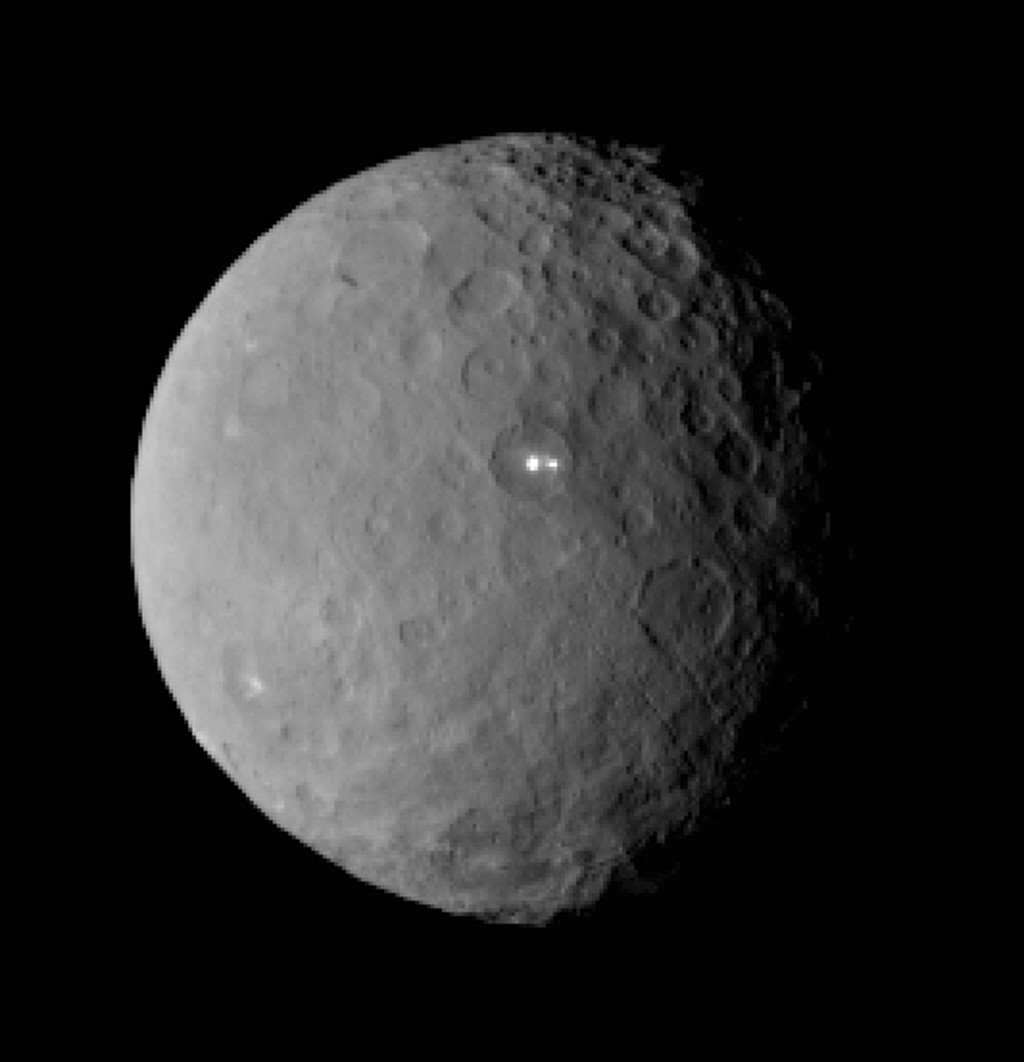NASA spacecraft making first visit to dwarf planet Ceres

This Feb. 19, 2015 image shows the dwarf planet Ceres provided by NASA, taken by the agency’s Dawn spacecraft from a distance of nearly 29,000 miles (46,000 kilometers). It shows that the brightest spot on Ceres has a dimmer companion, which apparently lies in the same basin, seen at center of the image. AP/NASA/JPL-Caltech/UCLA/MPS/DLR/IDA
PASADENA, California, United States — A NASA spacecraft is about to reach the end of a nearly eight-year journey and make the first rendezvous with a dwarf planet.
The Dawn craft will slip into orbit Friday around Ceres, a dwarf planet the size of Texas. Unlike robotic landings or other orbit captures, the arrival won’t be a nail-biter. Still, Dawn had to travel some 3 billion miles (5 billion kilometers) to reach the largest object in the asteroid belt between Mars and Jupiter.
“It’s been a roller coaster ride. It’s been extremely thrilling,” project manager Robert Mase of the NASA Jet Propulsion Laboratory said Monday.
Ceres is the first of two dwarf planets to receive visitors this year. NASA’s New Horizons spacecraft is barreling toward one-time planet Pluto where it will arrive in July. Dwarf planets are worlds that are spherical in shape. But unlike traditional planets, dwarf planets share the same space with other similar-sized celestial objects.
Launched in 2007, Dawn made the first stop of its journey at the asteroid Vesta. It beamed back more than 30,000 images of the rocky world inside the asteroid belt before heading to its final destination.
Mysterious bright spots
Dawn began its approach to Ceres in December, and last month it snapped pictures of the dwarf planet that revealed two mysterious bright spots inside a crater. Scientists will have to wait until the craft spirals closer to the surface in the coming months to get sharper images. It will get as close as 235 miles (400 kilometers) above Ceres’ surface, or roughly the distance of the International Space Station above Earth.
Last year, European researchers not connected with the mission detected water plumes spewing from two regions on Ceres. The source of the plumes remains unclear.
Deputy project scientist Carol Raymond said the shiny patches — possibly exposed ice or salt — were a surprise and could be related to the plumes. Dawn carries an instrument that should be able to detect the plumes if the surface is still active.
“The team is really, really excited about this feature because it is unique in the solar system,” Raymond said of the spots. “We will be revealing its true nature as we get closer and closer to the surface. So the mystery will be solved, but it is one that’s really got us on the edge of our seats.”

Robert Mase, project manager for the Dawn mission at Nasa’s Jet Propulsion Laboratory, speaks at news conference at JPL in Pasadena on Monday, March 2, 2015. NASA’s Dawn spacecraft is scheduled to slip into orbit around the dwarf planet Ceres on Friday, the last stop in a nearly eight-year journey. AP
The $473 million Dawn mission is the first to target two different celestial objects to better understand how the solar system evolved. It’s powered by ion propulsion engines, which provide gentle yet constant acceleration, making it more efficient than conventional rocket fuel. With its massive solar wings unfurled, it measures about 65 feet, the size of a tractor-trailer
Dwarf zone
Vesta and Ceres reside in a zone between Mars and Jupiter that’s littered with space rocks that never grew to be full-fledged planets.
The two are “literally fossils that we can investigate to really understand the processes that were going on” during the formation of the solar system, Raymond said.
Dawn entered orbit around Vesta in 2011 and spent a year photographing the lumpy surface and taking measurements of the second massive object in the asteroid belt from different altitudes.
Unlike rocky Vesta, Ceres —discovered in 1801 and measuring 600 miles (1,000 kilometers) across — is thought to possess a large amount of ice and some scientists think there may have been an ocean lurking below the surface.
Dawn will study Ceres for 16 months. At the end of the mission, it will stay in the lowest orbit indefinitely, said Mase, adding that it could remain there for hundreds of years.
Scientists will get a glimpse of another icy dwarf planet this summer when New Horizons arrives at Pluto. Once considered the ninth planet, Pluto was demoted to dwarf planet in 2006, seven months after New Horizons was launched.
RELATED STORIES
Huge asteroid to whip past Earth